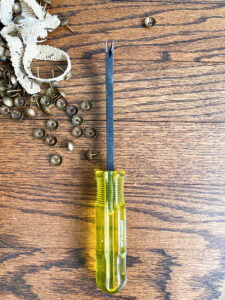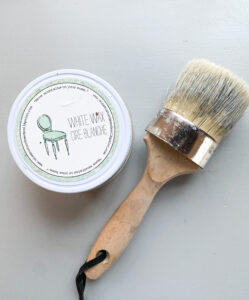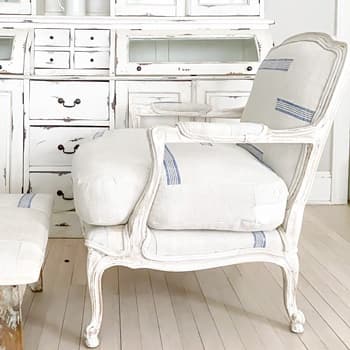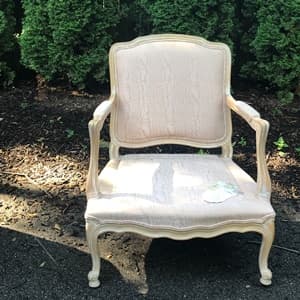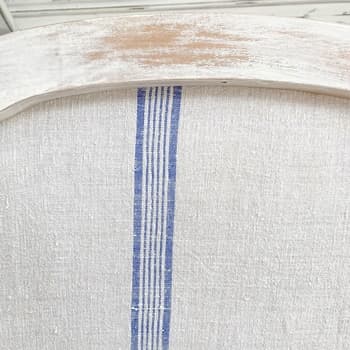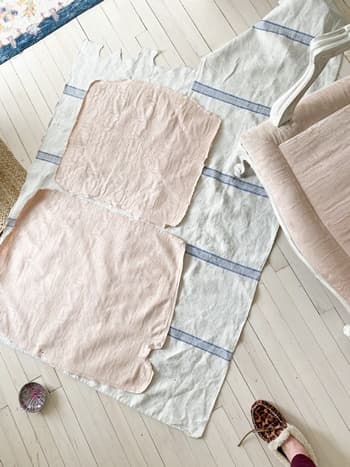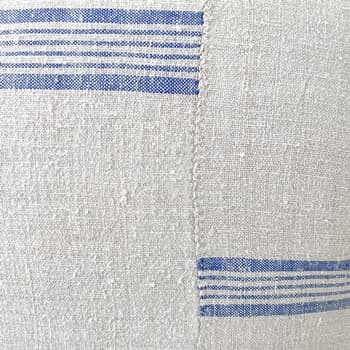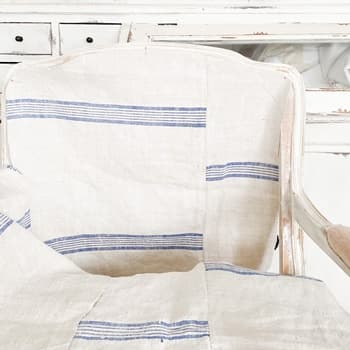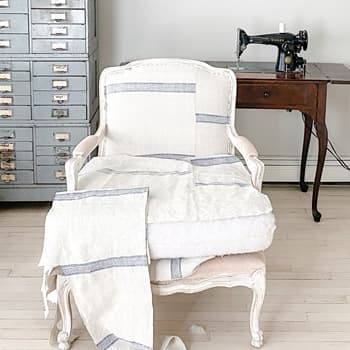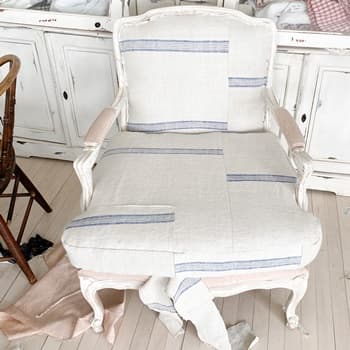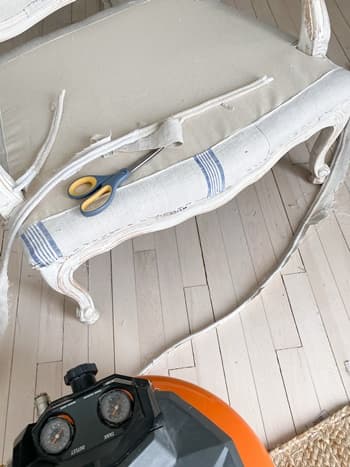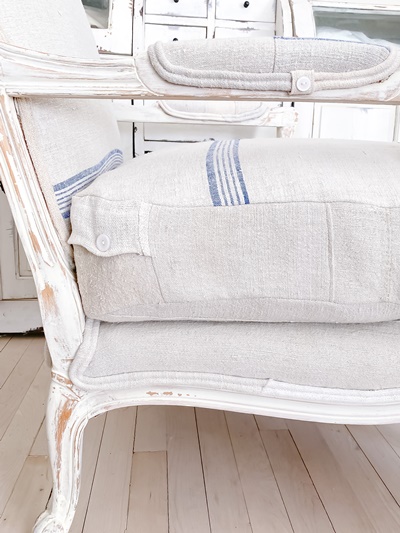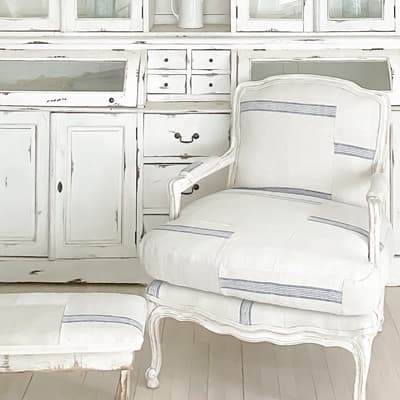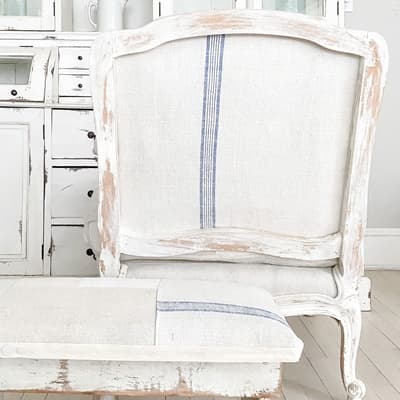*Disclosure: This post contains affiliate links at no additional cost to you.*
The Makeover of Two Settees Part One: Removing Upholstery Tacks and Adding White Wax to the Wood
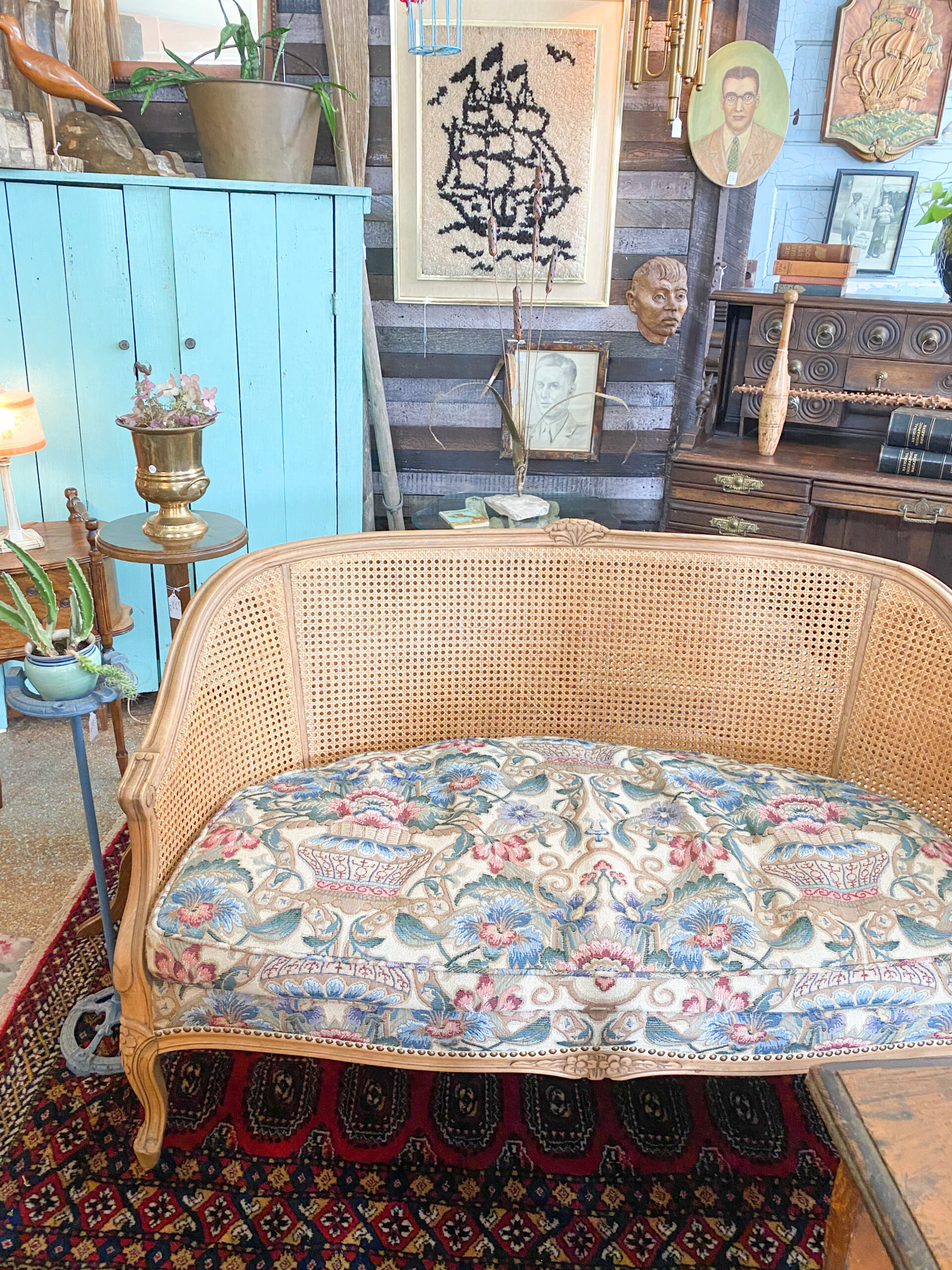
Last summer I stopped by one of my favorite local antique shops, Goodland Antiques in Bayview. As I entered from across the room, I spotted THIS beauty. I couldn’t rip the price tag off fast enough in order to stake my claim. I have done many settee makeovers in my day, but the shape of this, the tone of the wood and the perfect caning made me realize this was a special piece.
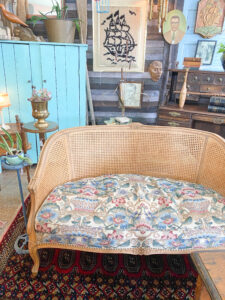
I brought it home with a happy pickers glow on my face. I was going to try really hard to find a spot for it. The thing about my home is it is on the smaller side, there really is not any space to add pieces that aren’t actually utilitarian. I have come to realize that even if pieces are extra special, if I try to squeeze them into my house just to own them, I find the clutter isn’t worth it. It doesn’t bring me joy. Settees can most definitely be useful, but they can also just be a fancy space filler if you have space.
When I got home I realized that it might be a good option to use at my dining room table. I did need two more seats at the table. It unfortunately was a bit too short. So I had the idea of adding casters.
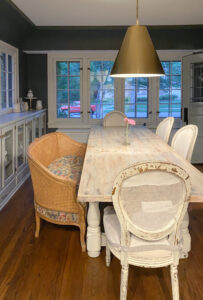
This was a bit of hope and prayer situation, but I was ready for the challenge since I was desperate to make it work in my home. The legs are solid wood, but they are on the thinner side, and time would only tell if they were strong enough to manage casters. I ordered these casters off of amazon and carefully drilled holes in the bottom of the feet to to insert them. If you try this, take your time drilling, with solid wood I found it easy to get the angle wrong. I did get the angle wrong on one leg, but I was able to correct it by adding wood glue and small wood dowel, then starting over again after the glue dried. They seemed to hold fine. But these wheels only rolled front to back, it was not user friendly for as much as this thing was going to get rolled. Then I changed them out for this set. The set I purchased had brakes, but this manufacture seems to not be offering those right now. We actually never use the brakes, so I don’t believe it makes much difference. They totally work!!! We are in nearly 9 months of using this at our only eating table with a family of 6. I am so happy. My kids love sitting in it and eating.
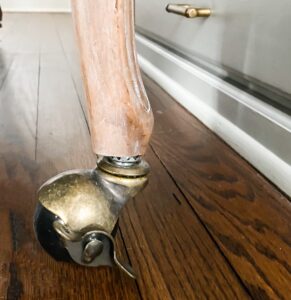
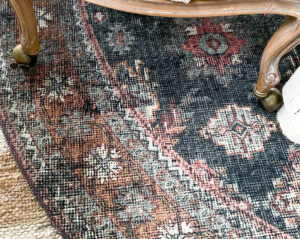
We have since added layered rugs to our dining room and the casters still work great
The height is ideal for a spot at the table. In a perfect world the settee would slide right under my table. It doesn’t. But my world is surely not perfect, and it doesn’t bother me.
I had plans to give this a fabric overhaul. The first step in doing that is removing the tacks and trim on the bottom. I have a confession…I have been doing upholstery for at least 7 years and I have always removed tacks and staples with a flat head screwdriver and pliers. It works, you have to be careful not to damage wood though. Anyway, I thought I would try this little tool that I found for around $25 on amazon. HOLY MOLY!! This was so much easier!! I know that starting out DIY projects its a pain to invest in all the tools not knowing if you would ever need them for another project. But this was worth it for me, even if I just used it for this project, it likely saved me a couple hours of work. And those couple of hours of removing tacks from furniture is not the most pleasant couple of hours. That is definitely not the fun part of reupholstering a piece.
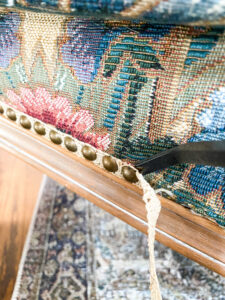
The other change I made, was that even though I loved the tone of the natural wood I wanted to soften it up a bit. This wood did not have a high gloss finish on it so I knew it would take to a layer of white wax really well. I used Miss Mustard Seed White wax to cover all the wood. I used a wax brush to make sure that all the caning got a somewhat even coverage. A trick that I have learned is that if you apply the wax, let it dry, and you happen to find areas where there are clumps you can apply some clear wax over those areas to work out the white wax to more even coverage. The change was very subtle, but it meant a lot to me.
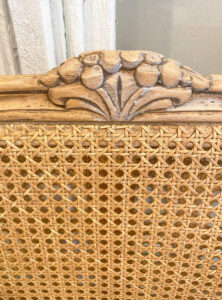
If you look closely you can see on the left its bare and the right has the white wax applied
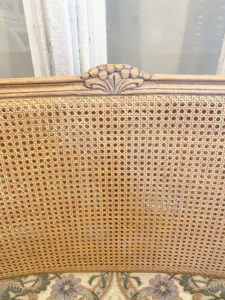
This is the complete white wax look
During the next part of this project (which actually turned into PROJECTS). I will go over the process of making the cushion. It got really messing, but 1000 % worth it.


